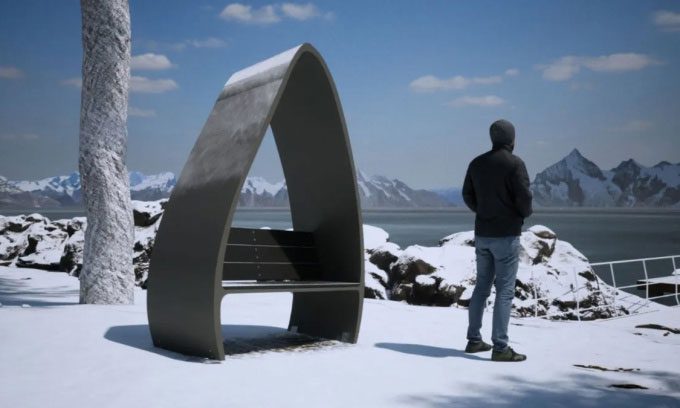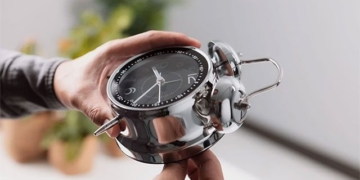Canvus, a startup in Ohio, recycles decommissioned wind turbine blades into both functional and aesthetically pleasing products.
According to estimates from WindEurope, by 2025, Europe will discard up to 25,000 tons of wind turbine blades each year, equivalent to more than 6,000 Hummer SUVs. This highlights the urgent need for environmentally friendly solutions to handle these massive turbine blades, Interesting Engineering reported on November 26.

Chair made from recycled wind turbine blades. (Photo: Canvus)
Founded in 2021 and based in Rocky River, Ohio, Canvus aims to tackle this issue. The company transforms decommissioned wind turbine blades into useful products with attractive designs, such as benches, picnic tables, and planters. These products have been utilized in various locations, creating sustainable spaces.
Wind turbine blades are coated with epoxy resin and primarily made from fiberglass, which presents significant challenges for recycling due to their durability and low recyclable material content. “We give a second life to these materials,” said Parker Kowalski, co-founder of Canvus.
The recycling process involves breaking down the turbine blades into smaller pieces at Canvus’s 10,200 m2 facility in Avon, Ohio. Here, more than 30 craftsmen continue to fabricate these materials into durable and eco-friendly products.
Canvus is not the only company recycling wind turbine blades, but it has a unique business model. Unlike other companies, Canvus primarily serves corporate clients looking to donate reusable products for public spaces. Each product acts as a marketing tool for the business, featuring a nameplate and a QR code linking to the company’s website. Canvus products are priced between $3,500 and $9,500, whereas renting an advertisement board in the U.S. costs at least $250 per month, according to Kowalski. Thus, this is an affordable and effective solution for businesses to promote themselves while contributing to sustainability efforts.
Canvus not only utilizes old wind turbine blades but also incorporates other recycled materials like rubber tires, shoes, and plastic waste into its products. However, experts are conducting a comprehensive life cycle assessment of the products, including the energy used for transporting and processing wind turbine blades.



















































